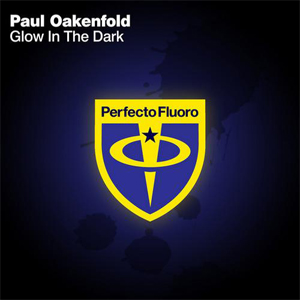 Few people have done more for establishing EDM as a mainstay in mainstream culture than Paul Oakenfold. Starting out as a house music DJ at the Project in the mid 80’s, he worked his way up to hosting club nights in major British superclubs Sound Shaft and Heaven. In the early 90’s, the DJ formed Perfecto Records, one of the most successful dance labels of the decade, producing artists such as BT, Tilt, and DJ Skribble. The artist continued to make a name for himself by remixing artists Michael Jackson, Happy Mondays, and, perhaps most notably, U2. Just this year, the artist released a single entitled “Glow in the Dark ” under Perfecto Fluoro as a follow up to last year’s trance single, “Full Moon Party.” I had the opportunity listen to the track, and found that it’s not something to be swept aside.
Few people have done more for establishing EDM as a mainstay in mainstream culture than Paul Oakenfold. Starting out as a house music DJ at the Project in the mid 80’s, he worked his way up to hosting club nights in major British superclubs Sound Shaft and Heaven. In the early 90’s, the DJ formed Perfecto Records, one of the most successful dance labels of the decade, producing artists such as BT, Tilt, and DJ Skribble. The artist continued to make a name for himself by remixing artists Michael Jackson, Happy Mondays, and, perhaps most notably, U2. Just this year, the artist released a single entitled “Glow in the Dark ” under Perfecto Fluoro as a follow up to last year’s trance single, “Full Moon Party.” I had the opportunity listen to the track, and found that it’s not something to be swept aside.
“Glow in the Dark” is driving and intense from the start. A pulsing bass beat is layered with a subtle melody made by what sounds like a jaw harp through a low pass filter. Soon, a steady stream of white noise is introduced that slowly grows in volume, ascends in pitch, then finally peaks and explodes. The music returns with the addition of a heavy, repetitive bass line and a hi hat sizzling on the off-beats. The overall mood is dark and inviting, and the unrelenting intensity of the music almost forcefully charges listeners’ interest.
One of the stronger elements of the song is its subtle use of ambience, most thoroughly explored around the two-minute mark. Oakenfold suddenly departs from the driving nature of the song by dissolving the drum beat into white noise and introducing a spacey synth flute that floats somewhere in the background. The overall effect is a break in attention from the music at hand, allowing listeners’ to focus on the space in which the song exists.
Another intriguing element of the song is its thorough use of the stereo field, which I feel is best represented around the four-minute mark. The main melody is played using a rapid “ping-pong” effect, causing every other note to switch its place from foreground to background and vice versa. Furthermore, the melody slowly swells to a point where the sound waves sound like they’re peaking, only to be plunged suddenly into the background and replaced by white noise and a vocal sample that states, “We are all stars that glow in the dark.” The effect is dizzying and disorienting, leaving listeners feeling lost in the music’s rapidly shifting location.
Ultimately, “Glow in the Dark” is a song that drives its listeners through from start to finish. Its energy is incredibly well shaped, with multiple peaks and dips, all spaced evenly throughout the track. Its intricate use of both harsh and ambient textures, as well as its complete use of the stereo field, creates something deeply experiential and immediate in nature. The resonance felt at the end of the track is similar to getting off of a roller coaster. That is, it leaves its listeners feeling exhilarated, maybe a little sick, but also strangely at peace.




